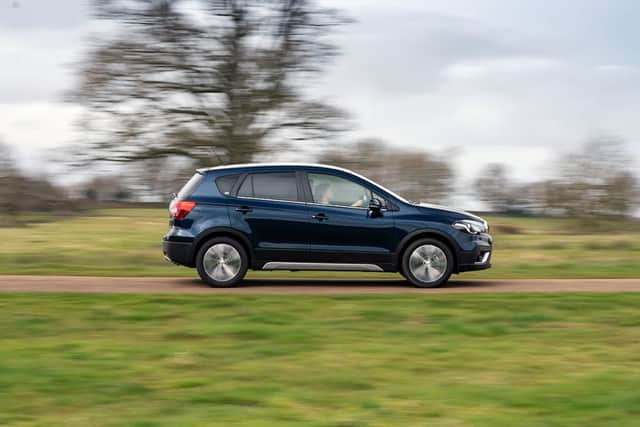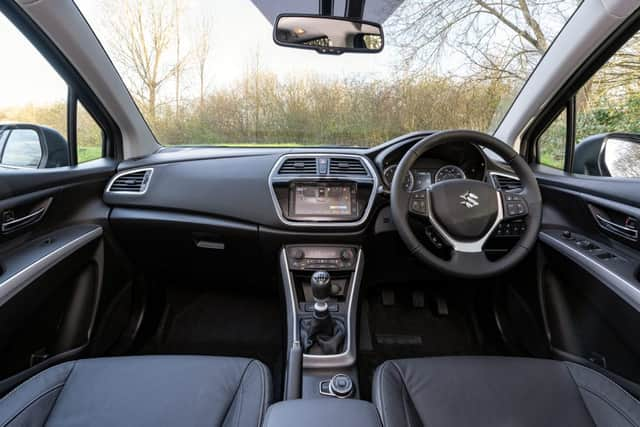Suzuki S-Cross Hybrid review


Slightly bigger than a Nissan Juke or Renault Captur, but slightly smaller than a Nissan Qashqai or Renault Kadjar, the Suzuki S-Cross sits right between the ultra-competitive crossover and small SUV classes. Perhaps straddling the gap between two popular segments in terms of size and equipment will help the Suzuki S-Cross appeal to buyers torn between the two - but will its grown-up looks work for, or against, it?
Good handling, a compelling price and decent levels of equipment all work in the S-Cross’s favour and the 1.4-litre Boosterjet turbocharged engine and 48V hybrid system delivers power smoothly and knocks 20 per cent off the car’s CO2 figure.
Advertisement
Hide AdAdvertisement
Hide AdThe S-Cross is the second-largest model in Suzuki’s fairly compact range of lifestyle-focused models, the largest being the Suzuki Across plug-in hybrid, which is a badge-engineered Toyota Rav4.
A toothy, chrome, grille adds a bit of bling to the otherwise sober exterior which looks more like a chunky, slightly jacked-up estate car than a full-blown SUV. On the interior the S-Cross is fairly understated too. There’s some silver-painted plastic around the cabin that looks cheap, but aside from those accents the cabin feels pretty well put together and of a decent, if not overly luxurious standard.


Suzuki S-Cross SZT
- Price: £23,999 (£24,499 as tested)
- Engine: 1.4-litre, four-cylinder, petrol with 48V mild hybrid
- Power: 127bhp
- Torque: 173 ft lb
- Transmission: Six-speed manual
- Top speed: 118bhp
- 0-62mph: 9.5 seconds
- Economy: 50.1mpg
- CO2 emissions: 127 g/km
The seats are comfortable and the driving position is good. The material quality of the instruments themselves is pleasingly solid, although the trip computer position (next to the dials on the instrument panel) is awkward if you want to use it on the move - although you could argue that’s a safety feature, I suppose.
The graphics and interface on the touchscreen infotainment system are dated-looking but functional, although the reversing camera takes just half a second too long to appear on screen when you engage reverse gear. It’s not enough to cause you much delay, but it was enough that it was slightly irritating during the course of my one-week test. Slim A-pillars mean drivers have an excellent view of the road out front and for those opting for lower-specification models without the reversing camera, the view out the rear is pretty good also, assuming you aren’t transporting adult rear passengers.
Advertisement
Hide AdAdvertisement
Hide AdIf you are, they might find it a bit of a squeeze depending on their height. While the legroom is fine, rear headroom is a little cramped due to a slightly sloping roof and a high rear bench, while middle passengers have to straddle quite a pronounced hump from the transmission tunnel down the centre of the cabin.
The boot is a decent size at 430 litres, which is bigger than you’ll find in a Nissan Juke, Skoda Kamiq or Renault Captur and on a par with the otherwise slightly larger Nissan Qashqai.


With 50 years experience specialising in off-road models (The S-Cross, like the Jimny, can trace its lineage back to the original Suzuki LJ which first hit the market in 1970), Suzuki is one of the few manufacturers in this segment that offers 4x4 across its range in the UK but our test car was the front-wheel drive SZT model.